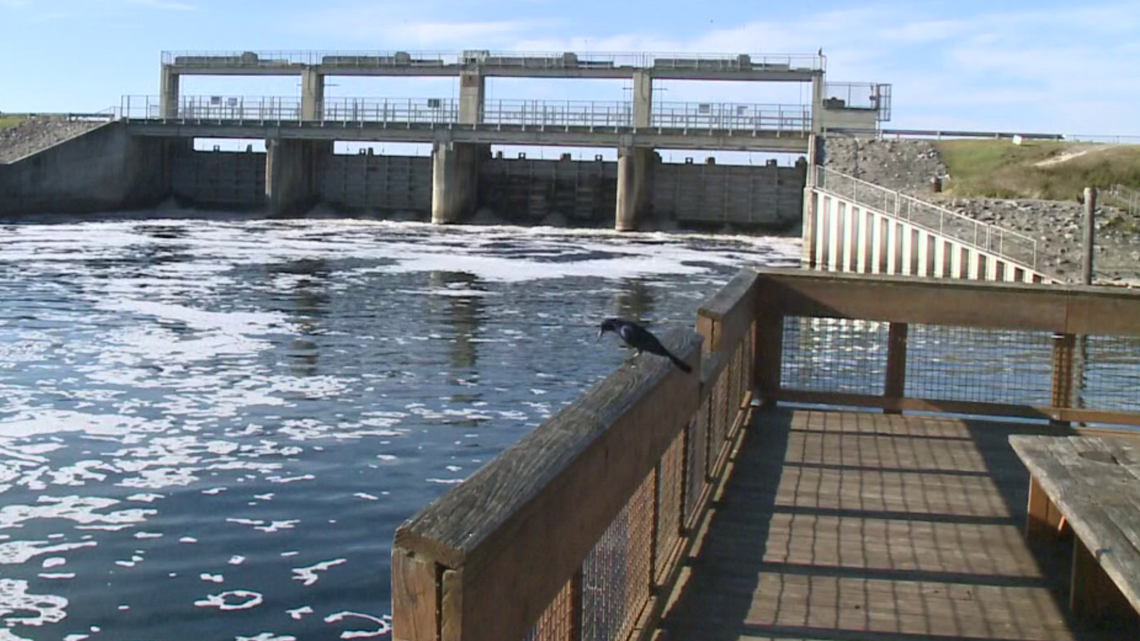

Johns River meet the stripers' strict spawning requirements. Johns River basin has been stocked with hatchery-produced striped bass. Johns River estuary to a length unsuitable for striper spawning. Rodman Dam reduced the spring-fed, swift-flowing Ocklawaha River upstream from the tidal St. Adult striped bass, which can weigh beyond 30 lbs, also require close-by access to aquatic refuge zones with summertime water temperatures no greater than 80 F (such as artesian springs and canopied tributary streams).
#RODMAN RESERVOIR DRAWDOWN SCHEDULE 2015 FREE#
Stripers in Florida are riverine fish which require about 50 miles of cool, free and swift-flowing large streams for successful spawning. Johns River (the Ocklawaha River is its only long-length, spring-fed, swift-flowing tributary stream)-contained naturally reproducing stocks of native striped bass. Back in 1961 fishery biologists determined that only two waterway systems in Florida-the Apalachicola River (the Chipola River is its only long-length, spring-fed, swift-flowing tributary stream) and the St.

Striped bass ( Morone saxatilis ), however, have a completely different life history. Ocklawahaman Paul Nosca's mounted trophy bass Trophy largemouth bass (10-lbs and over) are caught from time to time statewide. There is nothing unique about finding native largemouth bass in Florida. In almost all of this state (except where maybe it's too salty) you can dig a pond on your own property (if permitted and of suitable depth/size) that stocked largemouth bass will probably be able to successfully spawn and survive in. Largemouth bass ( Micropterus salmoides floridanus and/or Micropterus salmoides salmoides x Micropterus salmoides floridanus) exist and naturally reproduce in all of Florida's 67 counties. "Robin" Lewis III.Īn Information, Opinion, & Sources Report Johns River basin began in 1970 after the advent of the man-made Rodman Dam. Man-made stocking of striped bass into the St. Johns River Atlantic-race striped bass that no doubt were the result of successful natural spawning in the 56-mile length (at the time) free and swift-flowing Silver River-Ocklawaha River system. This man-made reservoir is bordered on the north by Levy andĬhannel, which generally meanders through the middle of the lake.Circa early 1960's: The late Mr. When the reservoir was impounded in 1909, trees were not cut, Leaving numerous stumps and logs, which remain today. An online survey was provided again this year so that stakeholdersĬould more easily provide recommendations and to assess stakeholder Input was received from stakeholders regarding aquatic plant The reservoir is supplied by water from two main sources, theĪ public meeting was held at the Lake Rousseau Campground and RV Resort. People described their relationship with the lake as concerned citizens,įishermen, boaters, wildlife viewers and paddlers. Regarding the amount of hydrilla in the lake last year, thirty-four perĬent of the forty-eight responders indicated that the control was about The main concerns about aquatic plant management relate toĮcological effects of chemical control, effects on duck hunting, fishing Most responded that they used the lake more than 20 days per year.

Was too little, thirty-three per cent thought it was about right, and The lake this past year, thirteen per cent of responders indicated that it When asked about the amount of water hyacinth and water lettuce on Thirty-five per cent responded that there had been too much hydrilla.

Sixty-one perĬent thought that the number of boat trails and channels on the lake wereįWC’s Hydrilla Management Position Statement directs FWC biologist Twenty-one per cent indicated that there had been too much. Navigation is extremely important on a reservoir filled withĪssociated boat trails must be continuously maintained free of emergent,įloating and submersed aquatic vegetation to maintain access and To determine the primary uses of the water body using a two tieredĪre navigation, irrigation, flood control and hydropower. Lake has two water control structures, which play an important role in Rodman reservoir drawdown schedule 2015 free# Meetings, it has been pointed out, that if these structures get dammed upīy aquatic plants, flooding may occur. The bypass structure which releases water to the lower WithlacoocheeĪt a maximum rate of 1,540 cubic feet per second cannot release adequateĪmounts of water during high rainfall conditions.


 0 kommentar(er)
0 kommentar(er)
